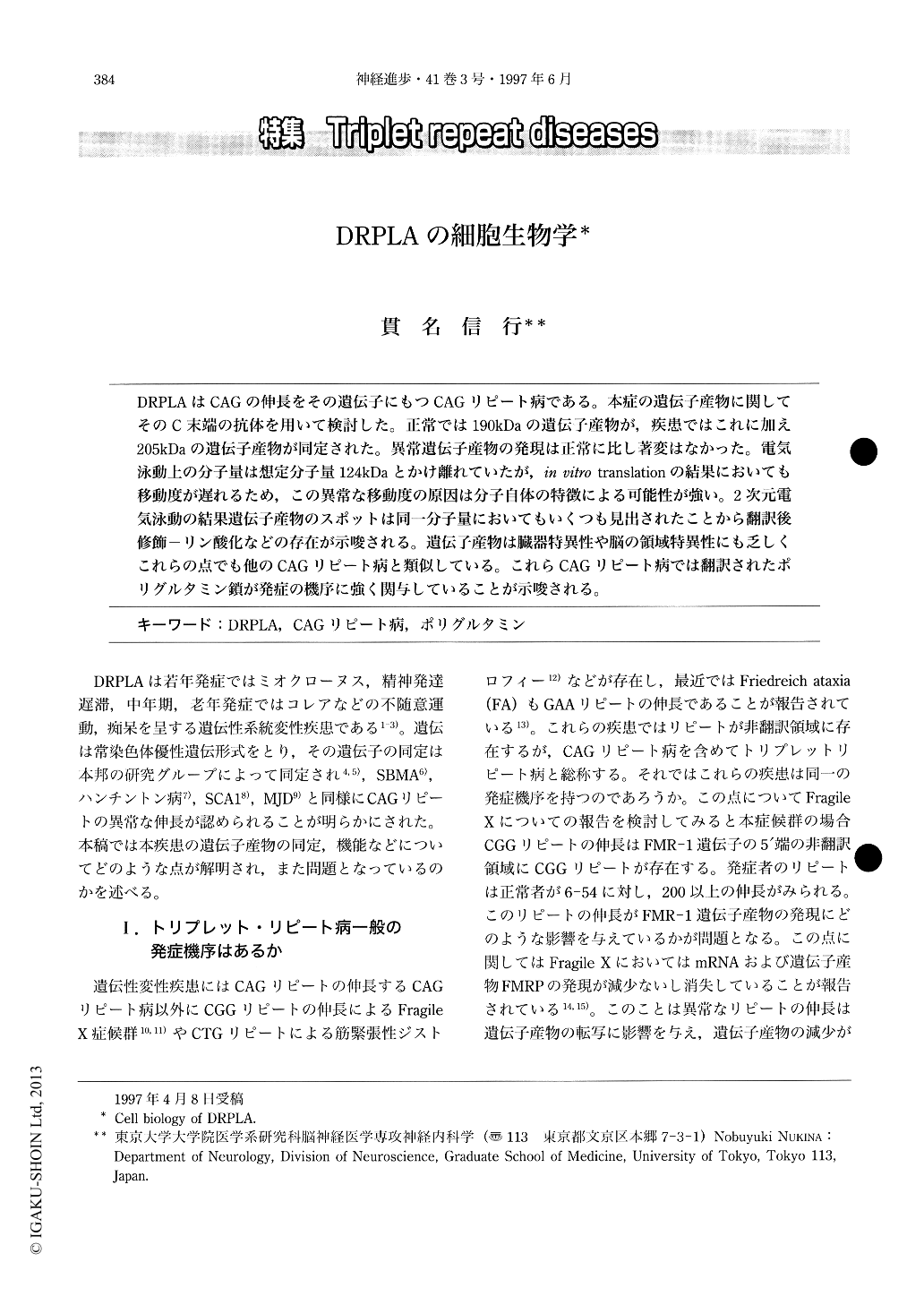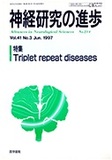Japanese
English
- 有料閲覧
- Abstract 文献概要
- 1ページ目 Look Inside
DRPLAはCAGの伸長をその遺伝子にもつCAGリピート病である。本症の遺伝子産物に関してそのC末端の抗体を用いて検討した。正常では190kDaの遺伝子産物が,疾患ではこれに加え205kDaの遺伝子産物が同定された。異常遺伝子産物の発現は正常に比し著変はなかった。電気泳動上の分子量は想定分子量124kDaとかけ離れていたが,in vitro translationの結果においても移動度が遅れるため,この異常な移動度の原因は分子自体の特徴による可能性が強い。2次元電気泳動の結果遺伝子産物のスポットは同一分子量においてもいくつも見出されたことから翻訳後修飾―リン酸化などの存在が示唆される。遺伝子産物は臓器特異性や脳の領域特異性にも乏しくこれらの点でも他のCAGリピート病と類似している。これらCAGリピート病では翻訳されたポリグルタミン鎖が発症の機序に強く関与していることが示唆される。
Dentatorubral-pallidoluysian atrophy (DRPLA) is associated with expansion of an unstable CAG repeat. Using antibodies against the synthetic peptide corresponding to the sequence of DRPLA gene carboxyl terminus, we have identified the DRPLA gene product in normal human brains as a 190kDa protein and also found a 205kDa protein specifically in DRPLA brains. The apparent molecular weight deduced from SDS-PAGE is larger than that estimated from its amino acid sequence. Recent in vitro study suggested that the primary gene product itself has a smaller molecular weight than in vivo gene product has, but it is still larger that the estimated one, suggesting that its aberrant electrophoretic mobility may be due to the conformation of the gene product. Although one of the post-translational modification is phosphorylation, there is no difference between the degree of phosphorylation in abnormal and normal allele products. Immunohistochemically, the DRPLA gene product was observed mainly in cytoplasmic structures of neurons. These results and recent study of other CAG repeat diseases demonstrated the possibility that the expanded polyglutamine stretch may participate in the pathological process of the CAG repeat diseases.

Copyright © 1997, Igaku-Shoin Ltd. All rights reserved.


